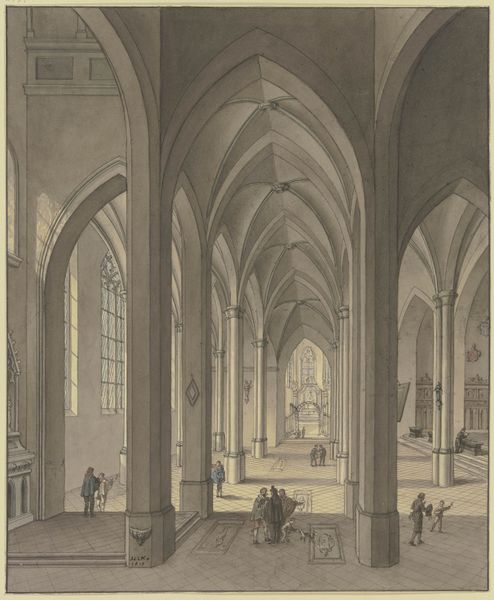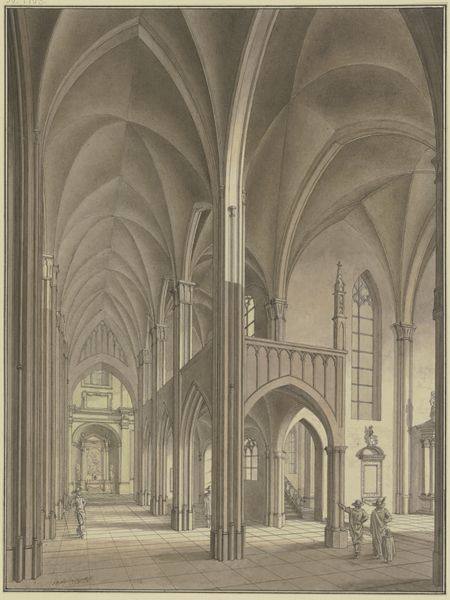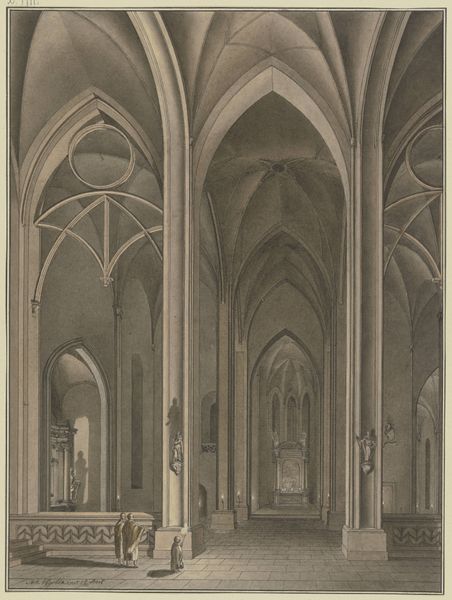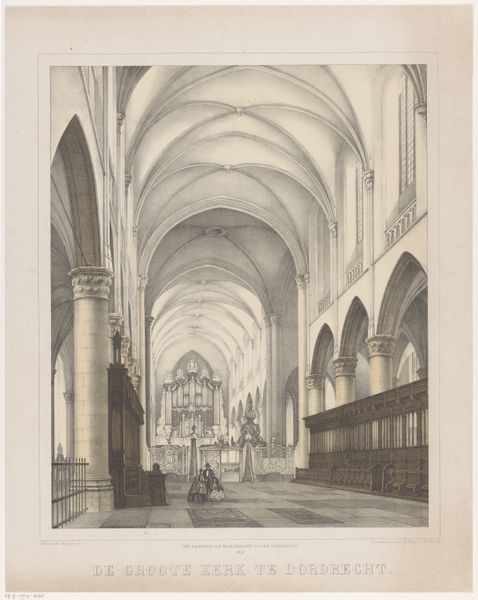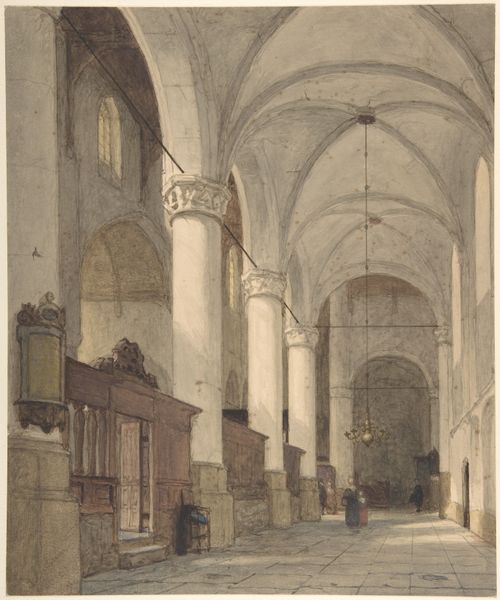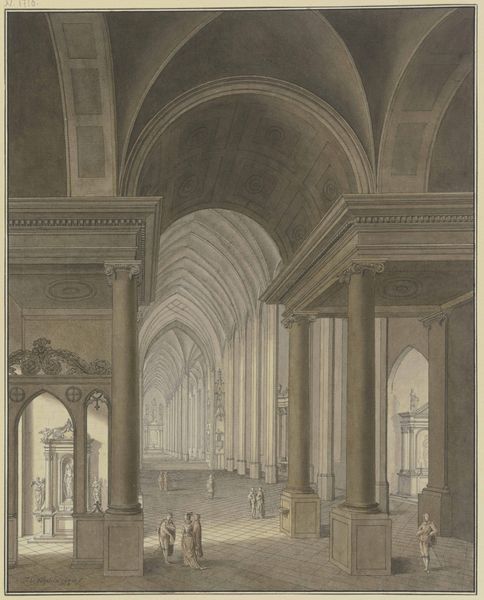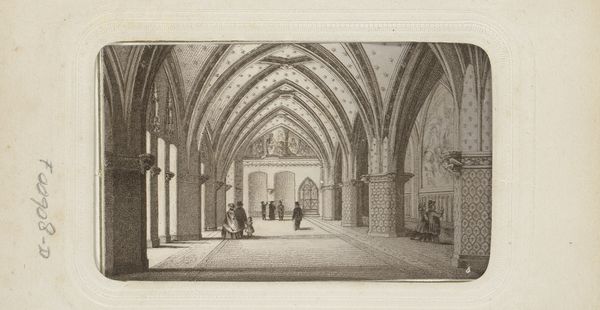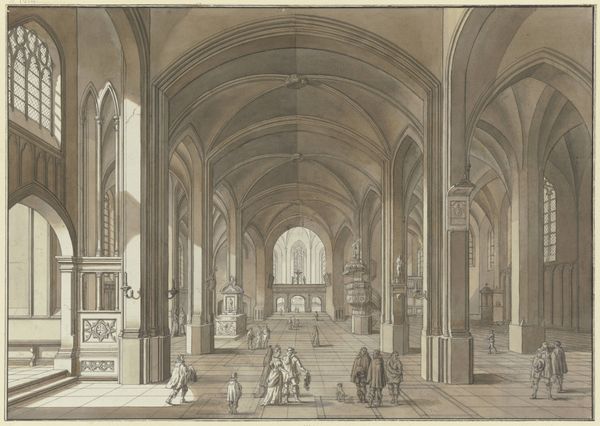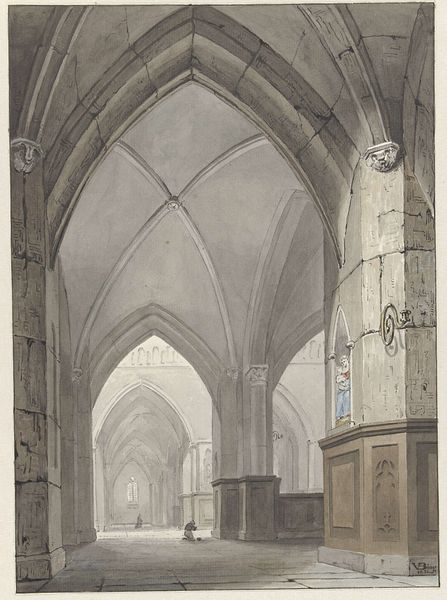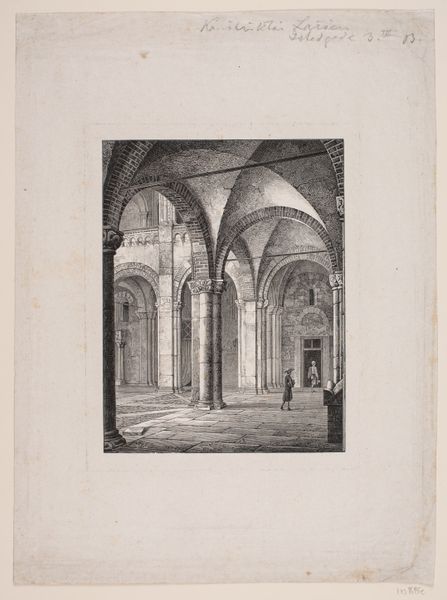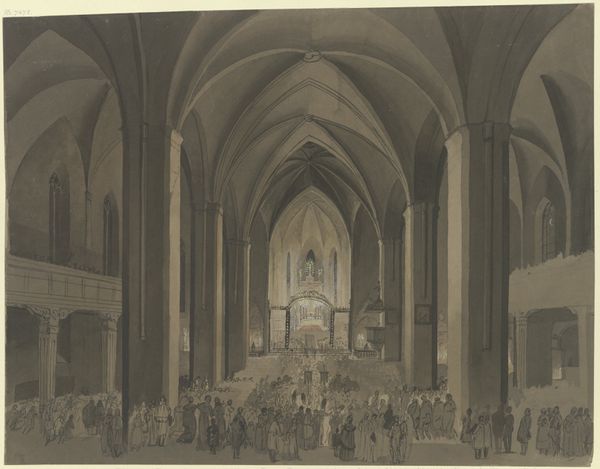
Blick auf Lettner und Chor einer gotischen Kirche mit Renaissance-Altären und Staffagefiguren im Kostüm des 17. Jahrhunderts 1778
0:00
0:00
drawing, paper, ink, architecture
#
drawing
#
landscape
#
paper
#
ink
#
classicism
#
cityscape
#
architecture
Copyright: Public Domain
Curator: Here we have Johann Vögelin's "View of the rood screen and choir of a Gothic church with Renaissance altars and staffage figures in 17th-century costume," created around 1778. Editor: It feels cavernous. The soaring arches and immense columns create a sense of overwhelming grandeur and almost unsettling emptiness. Curator: It is interesting to consider Vögelin's rendering of this space. Drawn with ink on paper, the technique itself speaks to a detailed, almost architectural precision, doesn't it? But that choice of medium allows him to combine precision with imaginative rendering. How do you see its place within the artistic milieu of the late 18th century? Editor: Well, beyond the formal architectural representation, note how Vögelin populates this gothic shell with figures in 17th-century costume. It points towards the then burgeoning interest in historical re-enactment, reflecting on past social and cultural displays that the museum and later public spectacles would go on to reproduce for national narratives. The costumes themselves serve almost as a bridge between periods, emphasizing the evolving nature of public identity. Curator: And doesn't the paper itself become a ground zero? A raw material upon which this dialogue between historical periods is made visible through the labor of mark-making. This resonates strongly with the debates swirling at the time about production and social labor—both within artistic and artisan spheres. Think of the role craft played as part of national identity building. Editor: That’s insightful, considering how the act of viewing art was itself becoming more public during this period. Institutions were beginning to shift towards democratizing art, which impacted both the representation of spaces like this and, crucially, their role as potential public spaces of instruction. Curator: Indeed. There is an evident labor in the drafting and meticulousness of his method which is also part of its reception: he used the very act of art production as means to reflect broader societal transformations around taste, knowledge, and display that shaped institutions of knowledge as they still exist. Editor: It certainly grants a multilayered consideration to how history, societal changes, and individual artistic vision intersect. Curator: Absolutely. Vögelin’s drawing presents not just a depiction of space, but a complex layering of temporal, material, and social processes made strikingly apparent.
Comments
No comments
Be the first to comment and join the conversation on the ultimate creative platform.
